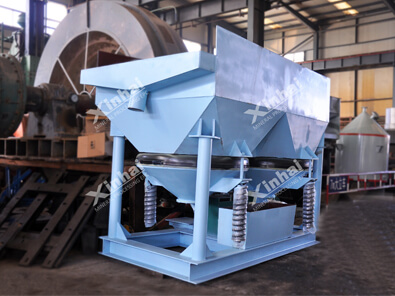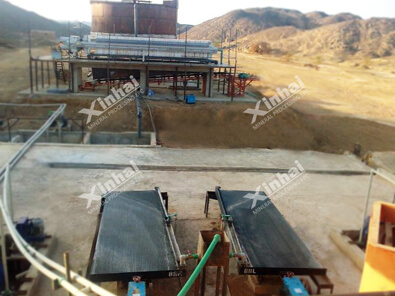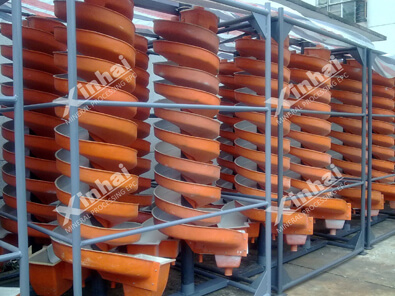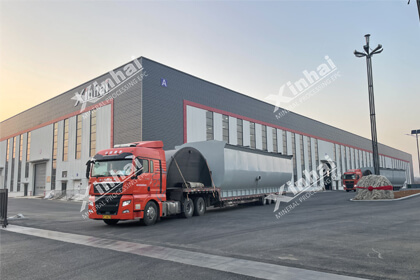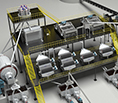What Is the Process of Alluvial Gold Mining?
 Laura
Laura
 May 26, 2025
May 26, 2025
 1851
1851
If you want to know more details about equipment, solutions, etc, please click the button below for free consultation, or leave your requirements!
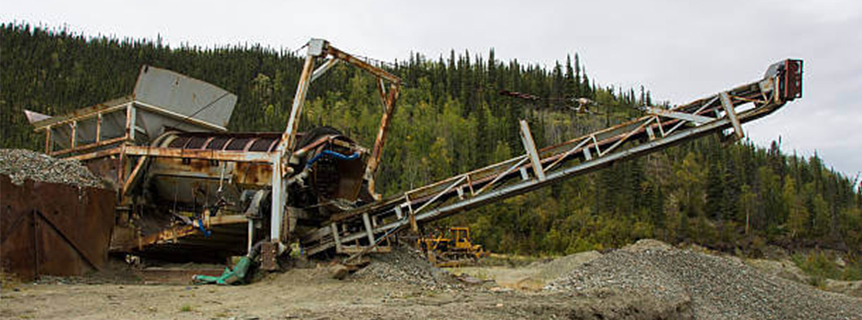
alluvial gold mining machines
Alluvial gold mining is one of the oldest and most accessible ways to extract gold, often linked to historic gold rushes and modern artisanal mining. Unlike hard rock mining, which targets gold embedded in solid rock, alluvial gold mining focuses on loose deposits of gold in riverbeds, floodplains, and sediments. In this SEO-optimized guide, we break down the process of alluvial gold mining, including the critical beneficiation methods used to separate gold from sand, gravel, and clay.
01 What Makes Alluvial Gold Unique?
BackAlluvial gold (or placer gold) forms when erosion washes gold particles from primary sources into waterways. These deposits are often found as nuggets, flakes, or fine dust mixed with sand and gravel. Their accessibility makes alluvial mining popular among small-scale miners and large operations alike.
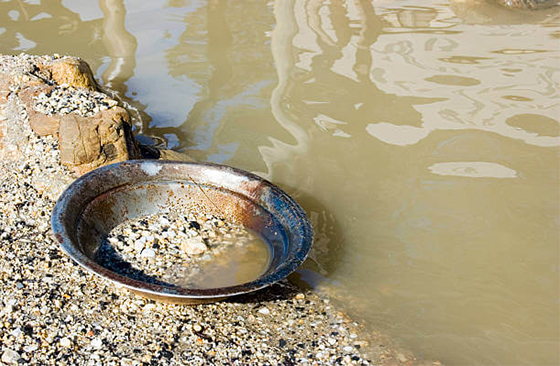
alluvial gold pic
02 The 5-Step Process of Alluvial Gold Mining
Back1. Exploration and Site Identification
Before mining begins, prospectors locate viable deposits using:
Geological Surveys: Analyzing river systems and sediment layers.
Pan Testing: Using gold pans to sample sediment for visible gold.
Drilling: Core drills assess the depth and concentration of gold-bearing gravel.
Key Takeaway: Successful exploration ensures high-yield mining with minimal waste.
2. Mining the Alluvial Deposit
Alluvial gold is mined using methods:
Manual Mining: Artisanal miners use shovels, buckets, and pans (common in small-scale operations).
Mechanical Mining: Heavy machinery like excavators, bulldozers, or dredgers to process large volumes.
Dredging: Floating platforms suck sediment from riverbeds.
Open-Pit Mining: Stripping surface layers to access gold-rich gravel.
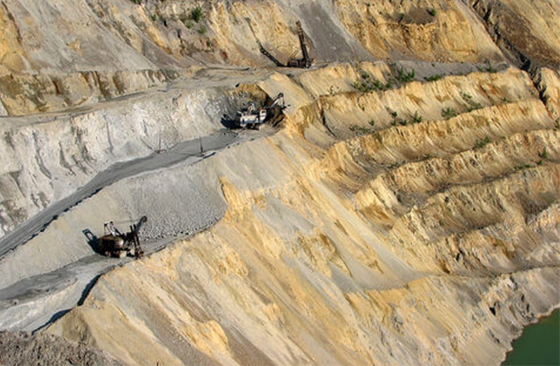
alluvial gold mining pic
3. Beneficiation: Separating Gold from Sediment
The beneficiation process is the heart of alluvial gold mining. It involves separating gold from sand, clay, and gravel using physical methods. Here’s how it works:
Step 1: Washing and Screening
Trommel Screens: Rotating drums filter out large rocks and debris.
Slucing: Water washes lighter materials away, leaving heavier gold particles.
Step 2: Gravity Separation
Sluice Boxes: Long channels with riffles trap gold as sediment flows through.
Centrifugal Concentrators: Spin material at high speeds to isolate dense gold.
Shaking Tables: Use vibration and water flow to separate fine gold particles.
Step 3: Mercury Amalgamation (Less Common)
Historical Method: Mercury binds to gold, forming an amalgam.
Modern Caution: Toxic and environmentally harmful; replaced by safer methods in most regions.
Step 4: Final Gold Recovery
Panning: Hand panning concentrates remaining material.
Magnetic Separation: Removes black sand (magnetite) from gold.
Key Takeaway: Gravity-based beneficiation is eco-friendly and highly effective for alluvial gold.
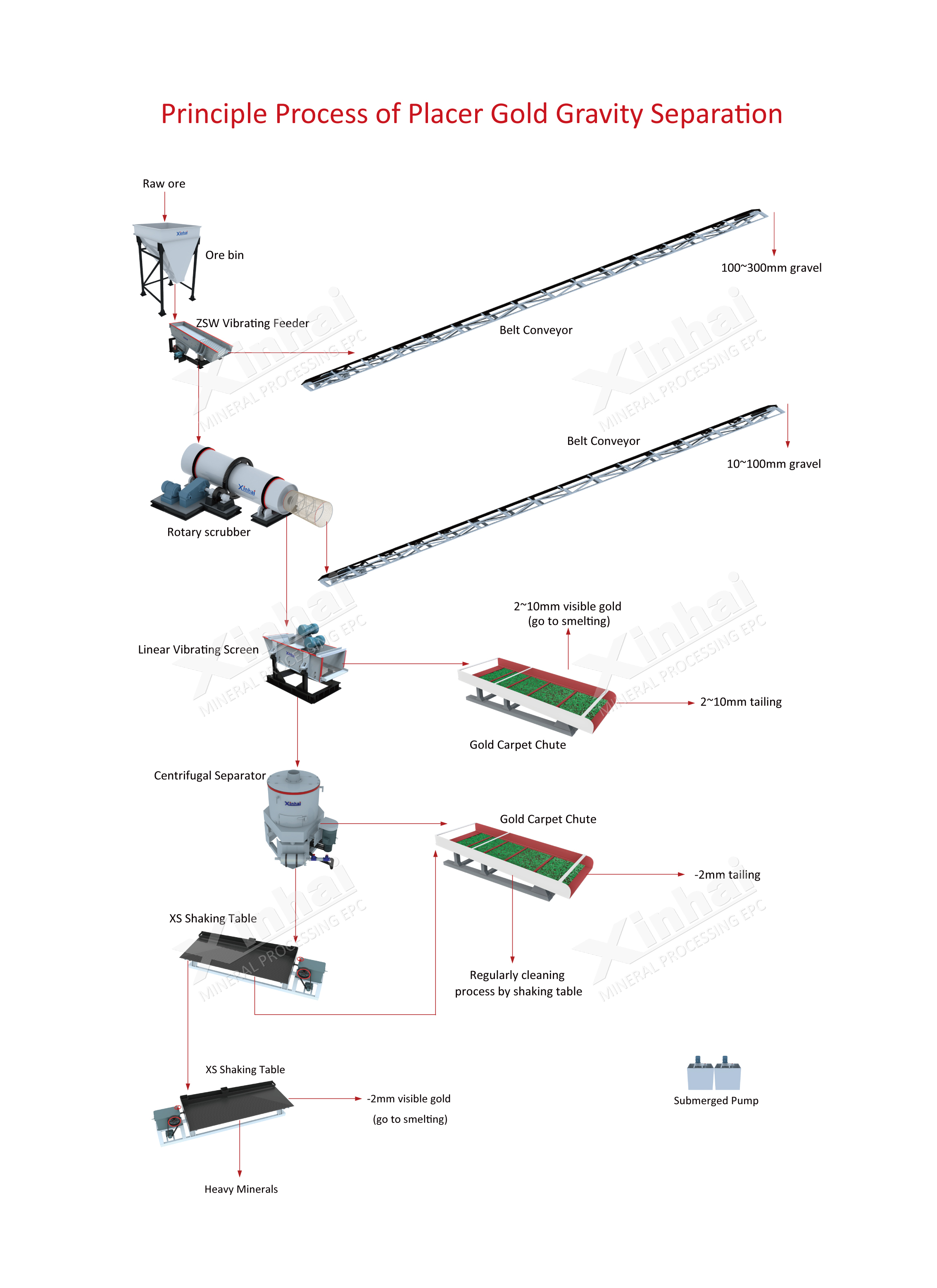
Placer gold gravity separation process flow
4. Refining the Gold
Raw alluvial concentrate still contains impurities. Refining methods include:
Smelting: Melting gold with fluxes to remove remaining minerals.
Electrolysis: Produces 99.9% pure gold bars.
5. Environmental Rehabilitation
Responsible miners restore mined areas by:
Backfilling Pits: Returning gravel to excavated sites.
Replanting Vegetation: Stabilizing soil and preventing erosion.
03 Modern Innovations in Alluvial Gold Beneficiation
BackMobile Wash Plants: Compact, portable systems for remote sites.
Pulsed Water Jigs: Improve recovery rates for fine gold.
Eco-Friendly Alternatives: Replacing mercury with borax or cyanide-free solutions.
04 FAQs About Alluvial Gold Mining
BackQ: How is alluvial mining different from hard rock mining?
A: Alluvial mining targets loose deposits in waterways, while hard rock mining extracts gold from solid ore.
Q: What tools do artisanal miners use?
A: Pans, sluice boxes, and simple hand tools like picks and shovels.
Q: Is alluvial gold purer than mined gold?
A: No—purity depends on the source, but alluvial gold is often 70–90% pure before refining.
Q: Can alluvial mining harm the environment?
A: Yes, if unregulated. Modern practices focus on reducing water pollution and land degradation.
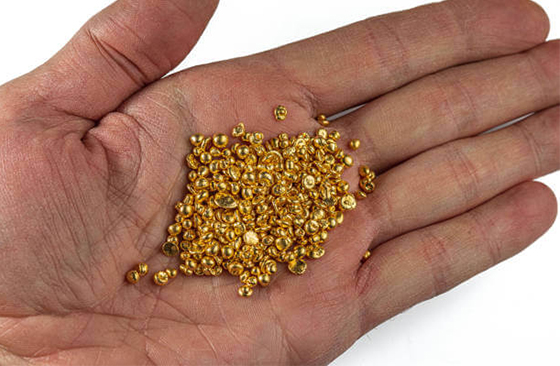
pure gold picture
05 Conclusion: The Golden Path from River to Refinery
BackAlluvial gold mining blends ancient techniques with modern technology to recover gold efficiently and sustainably. From panning in rivers to operating advanced wash plants, the process hinges on effective beneficiation to maximize yield while minimizing environmental impact. Whether you’re a prospector or an investor, understanding this process reveals why alluvial gold remains a cornerstone of the global gold supply.
Feel free to contact us and learn more about alluvial gold mining solutions!
 +86 183 3575 8886
+86 183 3575 8886 pinklaurabao@gmail.com
pinklaurabao@gmail.com



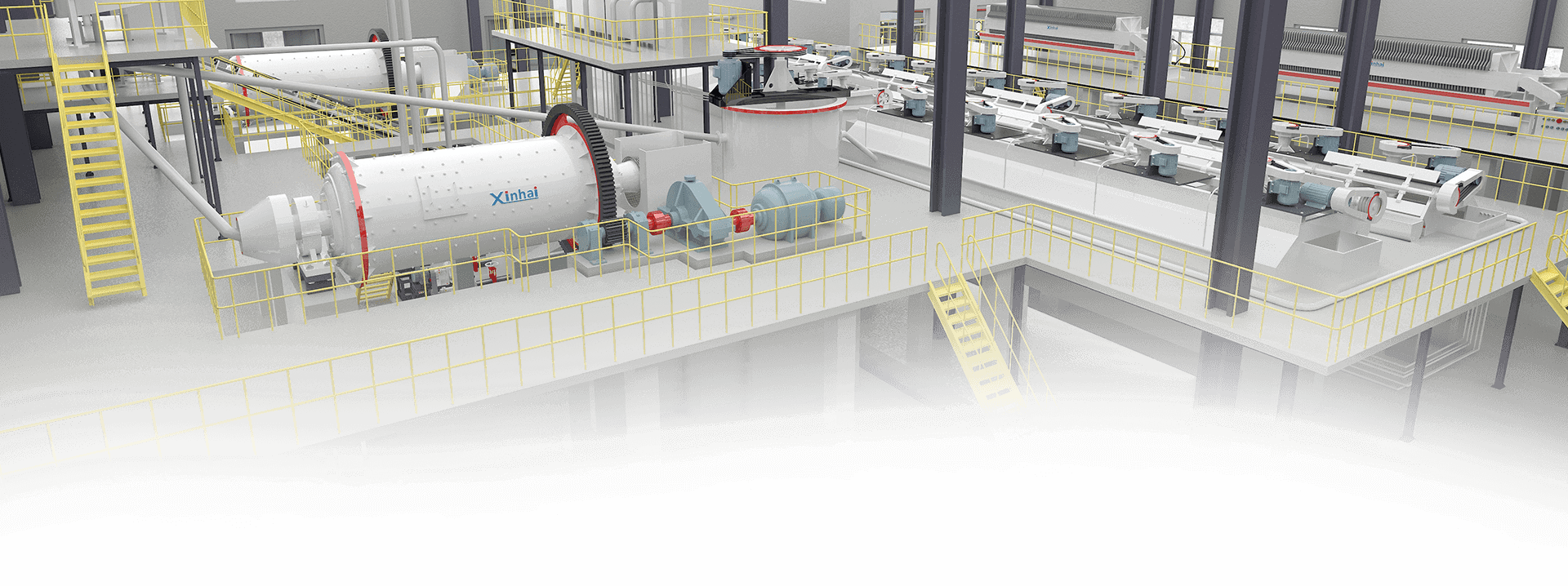
 Message
Message Chat Now
Chat Now


